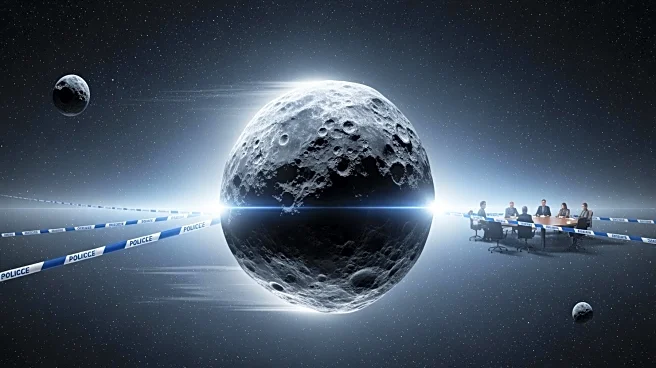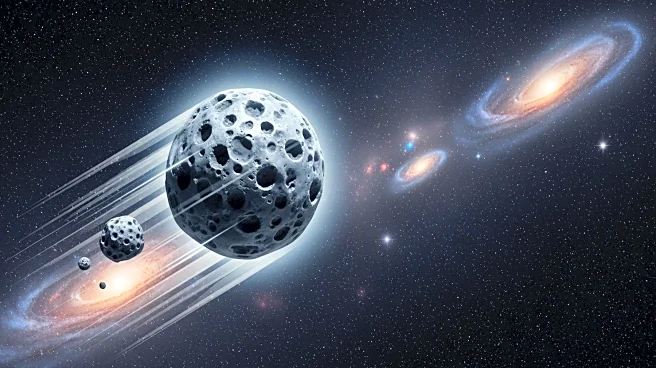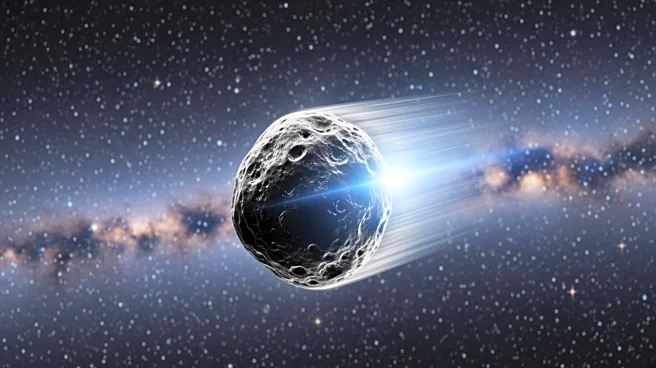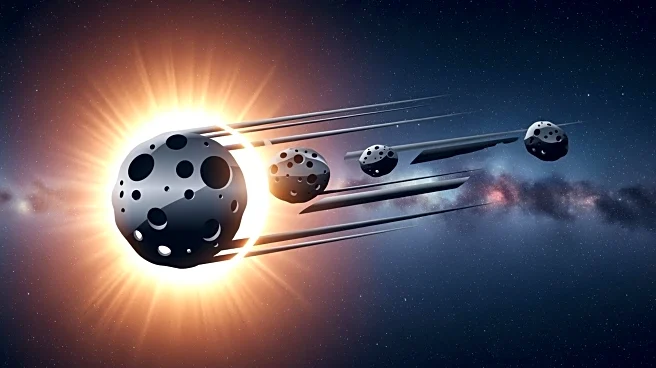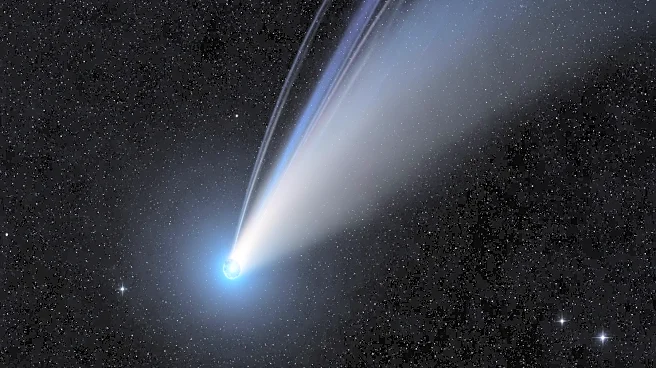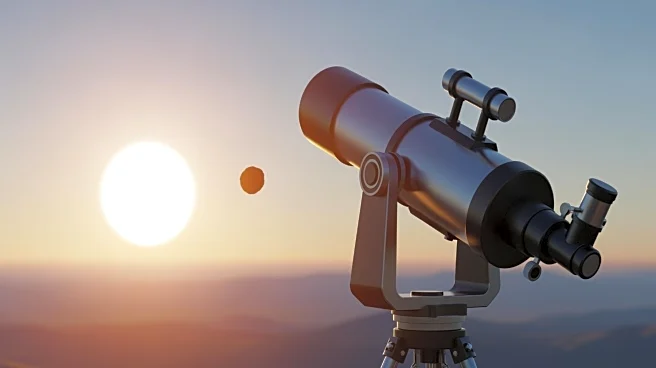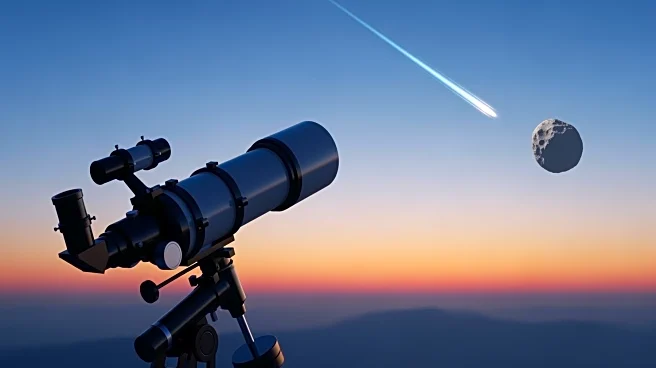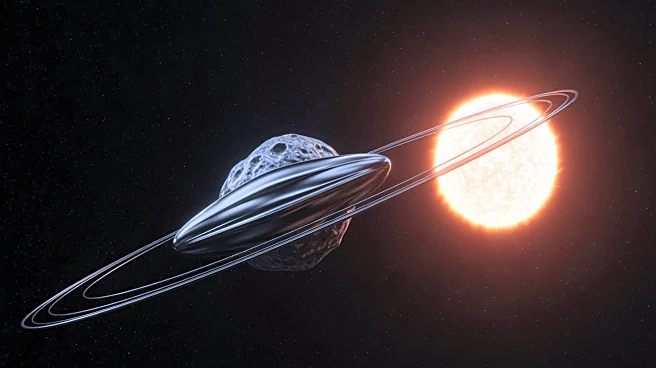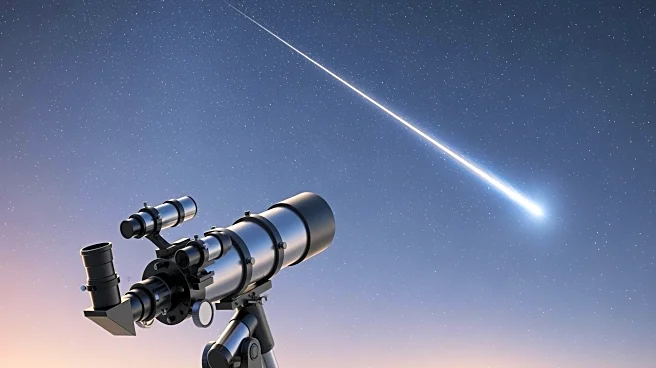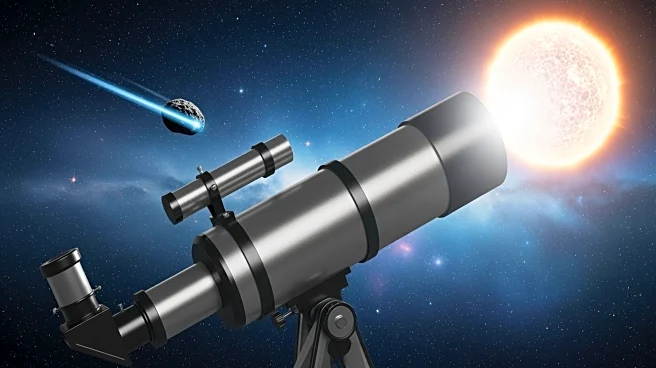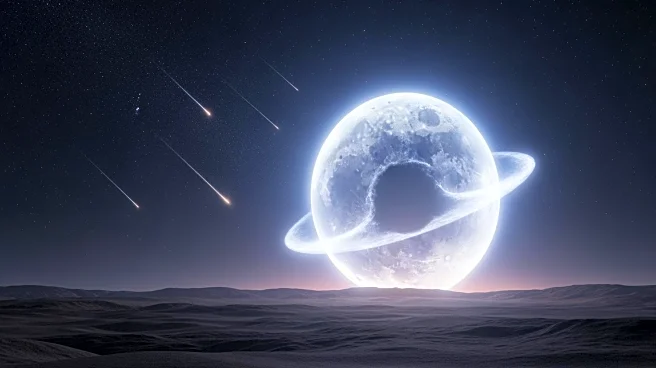What's Happening?
Astronomers have identified the second-fastest asteroid in the Solar System, named 2025 SC79, which orbits the Sun in just 128 days. This discovery was made by astronomer Scott Sheppard of Carnegie University,
who is known for discovering small moons of Jupiter, Saturn, Uranus, and Neptune. The asteroid, approximately 700 meters long, was found hiding in the Sun's glare, making it difficult to detect. Although 2025 SC79 will not approach Earth soon, its detection is crucial for planetary protection. Asteroids that are difficult to spot, especially those near the Sun, pose a significant collision risk if they approach Earth.
Why It's Important?
The discovery of 2025 SC79 highlights the importance of detecting asteroids that are hidden in the Sun's glare, as these 'twilight' asteroids could pose a serious threat if they come close to Earth. The ability to identify such objects is vital for developing strategies to prevent potential collisions. This discovery also underscores the need for continued investment in astronomical research and technology, such as the Dark Energy Camera used by Sheppard's team, which is supported by NASA. Understanding the composition and behavior of these asteroids can provide insights into their origins and how they withstand the Sun's intense heat.
What's Next?
Further observations of 2025 SC79 will be conducted over the coming months, as it is currently positioned behind the Sun from Earth's perspective. These studies aim to reveal more about the asteroid's composition and its ability to endure the Sun's heat. The research will also contribute to the broader understanding of asteroid dynamics and potential threats to Earth. Continued monitoring and analysis will be essential to assess any future risks posed by similar asteroids.
